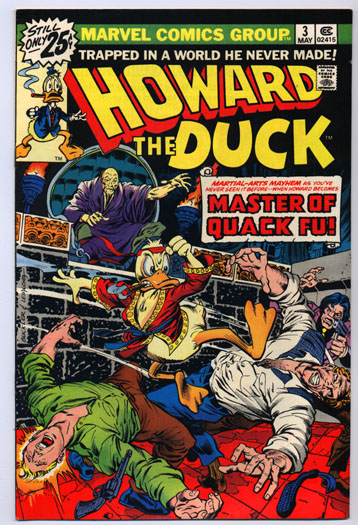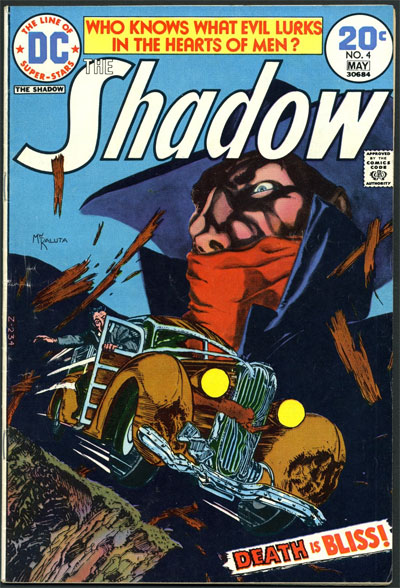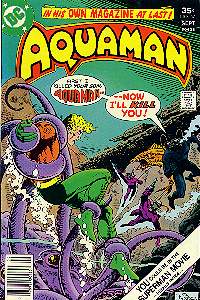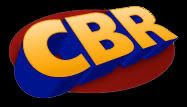Wednesday, June 17, 2009
Wax Packs: Batman (series 1)
 Wow.
Wow.I used to own a different versions of this set when it was originally released. Topps released two series, as well as two “factory sealed” editions that included bonus cards. This review is for the standard “wax pack” set.
Batman was probably the most popular set of non-sports cards since Star Wars. It was also the swansong for the traditional pulp-style trading cards. Competition from companies like Score were putting pressure on Topps to change its production styles. Upper Deck printed its first series of baseball cards in 1989 - the same year as Batman - and it was apparent that the days of pulp card stock were almost over. Gremlins 2 and Robocop 2 continued the tradition, but they were the last of a dying breed.
Unfortunately, when the market began to follow the collectors (as opposed to the other way around) it was bad news for all involved. Cards (and comics) stopped being a cheap diversion for kids and collectors and started to become an expensive habit that many delusional people thought would make them rich.
Anyway, time has been good to the first series of Batman cards. I hadn't looked at these in years but was really impressed after finding an affordable set online. I've added about 20 full sets to my collection in recent months, and this is easily the best of them.
REVIEW:
 Cover Card: (4 out of 5)
Cover Card: (4 out of 5)The art is a bit of old-school “cut and paste” that uses one of the famous promo shots of Batman and the Batmobile, as well as the movie’s logo. I think the iconic logo would have been a better selection, but the logo is used to better effect on the front of each card.
Design: (9 out of 10)
Amazingly simple, but crisp and clean. The typography is sharp and consistent, and the use of the “bat symbol” from the poster is a pretty neat addition to the art. The marketing of the film tended to rely on this image, which was an instantly recognizable icon.
 Photography: (10 out of 10)
Photography: (10 out of 10)At 132 cards, this is a big series. Still, there are only a few cards that come off as unnecessary and repetitive. Overall the photos are great choices that show off the movie’s cinematography, costumes and production designs (which were its strongest points.)
Production: (10 out of 10)
The photos are all bright and clear. Even the spot color reverse sides are clean and easy to read. When it comes to pulp stock, this is as good as it gets.
The Other Side: (4 out of 5)
There are no puzzles in this series, but the text on the back (which offers summaries and trivia) is incredibly thorough. While most cards settle for a sentence or two, many of these cards have several paragraphs of text on them. A very tight design.
Stickers: (9 out of 10)
Simple, but hews close to Topps’ traditional sticker design. You can draw a straight line from the stickers for the company’s 1976 Star Trek sticker series to this set. Still, a lot of images are repeated from the card set, which is a common problem for any series this big.
TOTAL: 92 PERCENT (46 out of 50)
Friday, June 12, 2009
Wax Packs: Battlestar Galactica
 I'm one of those rare beasts who like the original and "re-imagined" Battlestar Galactica. While I'll concede that the new series is better on pretty much every level, there's still a lot to love about the original, which is more Flash Gordon/Star Wars than The Shield.
I'm one of those rare beasts who like the original and "re-imagined" Battlestar Galactica. While I'll concede that the new series is better on pretty much every level, there's still a lot to love about the original, which is more Flash Gordon/Star Wars than The Shield.I had a lot of these cards as a child. Even had some of the Wonder Bread cards, which were printed in better card stock but lacked the crisp design of the Topps series.
And what a series it is! Somehow, BSG skirted the rules of non-sport trading cards by producing a massive 132-card set, with a 22-sticker subset. That's twice as large as any single-series of Star Wars cards.
BSG burned out quickly, though, and was gone by the end of it's first year. Naturally, it took the Topps series with it, and it would be many more years before BSG returned to trading cards.
This series also includes a few cards of my first boyhood crush, Maren Jenson. By all rights, that honor should have fallen on Batgirl, but Maren just happened to be in the right place at the right time, I guess.
REVIEW:
Cover Card: (0 out of 5)
Nope. The idea of the "cover card" hadn't really caught on yet at Topps. To add insult to injury, the first card in the set features Lorne Green striking a sexy pose.
Design: (8 out of 10)
Crips and bright, though a little generic. While the "cutline" is a little dull, I love how the logo is prominently displayed on the front of each card. (Weirdly, BSG had two different logos, one that appeared on merchandise like cards and comics, and the one that was used in the title credits.) And the design allows for both verticle and horizontal positioning without disruption.
 Photography: (9 out of 10)
Photography: (9 out of 10)Just short of perfect. This is a case where a card set's reach exceeds its grasp. The cards were produced using (primarily) images from the pilot episode. By trying to squeeze 132 cards from a single film, some of the images get a little repetitive. On the plus side, though, there are a few promo photos used, apparently taken on the Universal Studios lot. Outside of Star Wars, it's hard to find "behind the scenes" cards. Remember what I said about Miss Jansen?
Production: (9 out of 10)
Pretty good. Not as sharp and clear as some of the Star Wars cards, but leaps and bounds beter than the photos in the second Return of the Jedi series. There are a handful of dark, grainy photos in this set, something that could have been corrected by reducing the series to 100 cards.
The Other Side: (4 out of 5)
A puzzle, trivia and details about the cast and crew. Good stuff, but nothing groundbreaking.
Stickers: (8 out of 10)
With a set this ambitious, ,there's bound to be some re-runs. Many (all?) of these stickers reproduce photos already found on the cards. That's not such a bad thing, though. Also, the stickers are based on the designs of the Star Trek/Star Wars stickers, so there's a great sense of lineage in this set.
TOTAL: 76 PERCENT (38 out of 50)
Labels:
battlestar galactica,
maren jensen,
trading cards
Thursday, June 11, 2009
Fred and Barney Meet the Thing
Here, for no reason, is some fairly bad video from Fred and Barney Meet the Thing, and honest-to-god Saturday morning cartoon in the 1970s. This is one of the most bizarre productions from a decade that specialized in bizarre productions (Lidsville, anyone?)
Wax Packs: Close Encounters of the Third Kind
 So, I've been re-discovering my love of "non-sport" trading cards in recent weeks.
So, I've been re-discovering my love of "non-sport" trading cards in recent weeks.As it turns out, these cards aren't worth much these days, with only a few exceptions. Many of these cards I had as a child, but haven't seen them in 20-25 years. My memories of them are still vivid — such as walking down to the local Junior Market to buy Star Wars or Jaws 2 wax packs — and it's surprising how well I still remember the small details about these cards.
What's also surprising are some of the things I didn't notice. Which brings me to my first short review for the 1978 set of Close Encounters of the Third Kind trading cards.
This is one of the few non-sport series I can think of that relies on such as dark design. Later in the year Topps would also adopt black borders into the design of the Jaws 2 series, and it works pretty well for both movies. It also makes them stand out from the blue/red color schemes that were so prevelant because, I presume, of the success of the Star Wars cards.
 As a kid, I was a little weirded out by the "Starring Melinda Dillon" card in the CEOT3K series. The lighting was strange, and it was so tightly cropped that it was hard to tell exactly what was happening in it. It looked overtly sexual for some reason (I don't know why.) I came across this card, as well as the Teri Garr "actress" card when something occurred to me ... where was the Richard Dreyfuss card? I flipped quickly to the set only to find that the star of the movie appears nowhere in the entire set. There were probably legal reasons for this, but it's still damn bizarre.
As a kid, I was a little weirded out by the "Starring Melinda Dillon" card in the CEOT3K series. The lighting was strange, and it was so tightly cropped that it was hard to tell exactly what was happening in it. It looked overtly sexual for some reason (I don't know why.) I came across this card, as well as the Teri Garr "actress" card when something occurred to me ... where was the Richard Dreyfuss card? I flipped quickly to the set only to find that the star of the movie appears nowhere in the entire set. There were probably legal reasons for this, but it's still damn bizarre.REVIEW:
Cover Card: (0 out of 5)
Nope. The series kicks off with a #1 card depicting a parked fight plane from the 1940s. Yawn.
Design: (8 out of 10)
There's a lot to be said for simplicity. The front design never intereferes with the photography. In fact, the dark borders actually make the color in the cards that much more vivid.
Photography: (8 out of 10)
Overall, pretty good. The series is hampered by the absence of Richard Dreyfuss, so the movie's lead character — and participant in the film's most important scenes — come off as a little awkward. Still, the solution is kind of fun ... LOTS of photos of the "mother ship" landing from the end of the movie make for some colorful, if slightly repetitive, cards. Oh, and Steven Speilberg ever gets a card!
Production: (8 out of 10)
The photos are pretty sharp, but nothing to get excited about. Considering how inconsistent Topps' photo quality was in its nonsports cards (which might have been the fault of the movie studios and not Topps,) CEOT3K is a solid, if unspectaular, set.
The Other Side: (4 out of 5)
Story synopsis, trivia and a puzzle. Pretty much what you'd expect from Topps in the late 1970s.
Stickers: (7 out of 10)
The stickers reprint many of the "mother ship" landing cards on slick paper. While they look nice and hold up well as an independent set, the problem of repitition in the cards is even more pronounced. Still, there are some nice SFX photos here, even if the alien card looks a little scary.
TOTAL: 70 PERCENT (35 out of 50)
Friday, March 20, 2009
Inteview with Herb Trimpe
It looks like there's a Herb Trimpe renaissance taking place. He's had new work published in Hulk specials over at Marvel, while fandom is taking a second look at his legacy (which follows about 15 years of Wizard magazine talking shit about him. Who's laughing now Gareb Shamus?) I met Trimpe last year at a convention and he had one of the longest lines in the building (and accidentally managed to block people from visiting June Brigman's table next to his.)
The interview above is from a 2008 Pop Culture America show.
Thursday, March 19, 2009
The Master of Quack Fu
 I love me some Howard the Duck, but the book always worked best when it avoided explicit superhero parodies.
I love me some Howard the Duck, but the book always worked best when it avoided explicit superhero parodies.The weakest issues in the series were parodies of other Marvel titles. Sure, “Iron Duck” and the “Master of Quak Fu” made for some great cover art, but the stories were tepid (Howard as “Son of Satan” is the exception.)
The third issue is intended as a lampoon of the kung fu craze of the mid 1970s. The problem is that writer Steve Gerber doesn’t really know what he thinks about the fad. Howard, of course, hates it, but Gerber can’t eloquently explain why, and the book frequently contradicts itself.
The story begins with Howard and Beverly leaving a kung fu movie. Howard is clearly disgusted by the violence in the film, calling it “training for the local troops.” He also takes issue with Hollywood exploiting as “ancient tradition” for its own end as he stands on the street shouting at people. All he needs is a box to stand on with the word “soap” written on it.
Anyway, the kung fu craze gets out of control when, at a local diner, Howard and Bev see a character named "Count Macho" (based on Count Dante, who ran numerous ads in comics in the 1970s) kill an overzealous karate fan.
Early in the issue, Howard proclaims that people who enjoy violence "don't have the mental equipment to be sure they exists." So what does he do when Count Macho kidnaps Bev? He takes a crash course in kung fu so that he can fight back. Like all good liberals (and conservatives, for that) Howard's real concern isn't his own ability to process reality ... it's everyone else's. He thinks he lives in a world of idiots, which is probably true. He simply can't recognize that he's an idiot, too.
I'm not really sure what Gerber's message here, was. It begins as a slam against kung fu movies, but the story would have felt at home in a Shaw Brothers picture. Howard abhors violence, but turns to it the first chance he gets. Because the story has no intellectual center to argue from, the issue feels like nothing more than propaghanda.
The issue features guest art by John Buscema. Frank Brunner quit after two issues when Marvel passed on a requested pay raise. It was their loss ... Brunner is a fantastic artist.
Friday, March 13, 2009
Vertigo gets off to an early start
 DC Comic's "Vertigo" imprint didn't launch until 1993, but the seeds for the line had been in place since the early 1970s. DC had experimented with more mature titles (i.e., "not superheroes") a few times, with such books as Swamp Thing, The Shadow, Jonah Hex and their assorted mystery/horror anthologies. For a lot of reasons (such the the national paper shortage, changes in editorial staff, etc.) the company had a hard time keeping any new book in print for more than a dozen issues, so many of their best books were also their most brief.
DC Comic's "Vertigo" imprint didn't launch until 1993, but the seeds for the line had been in place since the early 1970s. DC had experimented with more mature titles (i.e., "not superheroes") a few times, with such books as Swamp Thing, The Shadow, Jonah Hex and their assorted mystery/horror anthologies. For a lot of reasons (such the the national paper shortage, changes in editorial staff, etc.) the company had a hard time keeping any new book in print for more than a dozen issues, so many of their best books were also their most brief.One of the best comics the company published in the 1070s was the Denny O'Neil/Mike Kaluta interpretation of The Shadow (it also featured some occasionally uncredited assistance from Jeff Jones and Bernie Wrightson.) It was a no-nonsense interpretation of the William Gibson pulps, with The Shadow portrayed more like an underworld boogeyman than a costumed adventurer. Kaluta left the book after a few issues, with the remainder completed by the likes of Frank Robbins and the much-underrated E.R. Cruz. The series even featured the first meeting of The Shadow and The Avenger, something that pulp fanboys had been talking about for decades. They'd meet again in the late 1980s, during the controversial — and hilarious — run on The Shadow by Andy Helfler and Kyle Baker (anther prototype series for Vertigo.)
After a dozen issues, though, DC pulled the plug. O'Neil said he was never offered a reason for the book's cancellation and had every reason to believe it had sold well (at least, well enough to continue publication.) The O'Neil/Kaluta stories were collected in The Private Files of The Shadow, a hardback that has been out of print for many years (and will likey remain so, seeing how the comic rights to The Shadow are about as popular as Chris Brown right now.)
Labels:
comics,
DC Comics,
Denny O'Neil,
Michael Kaluta,
The Shadow,
Vertigo
Thursday, March 12, 2009
Tomb of Dracula: THE MOVIE
No, I don't mean Blade: Trinity. In 1981 a Japanese company created a short movie based on Marvel's Tomb of Dracula comic. This was actually available for a time on video in America, but has been out of print for probably 25 years. Where's Anchor Bay when you need them?
And, while I'm at it, why isn't this available on video, too?
Wednesday, March 11, 2009
Godzilla is a Four-Letter Word
 Here's a story that kinda creeps me out.
Here's a story that kinda creeps me out.When I was a kid (maybe five years old) my neighbor had a copy of Godzilla that had the Avengers in it. I was floored seeing the likes of Thor and Iron-Man on the same pages as Godzilla. But my neighbor, who was a few years older than me, wouldn't let me read it.
His reason? It was full of too many "bad words." He'd open the pages at random and point to some word in a balloon and tell me it was a "cuss word" and that I shouldn't say it.
Part of me wants to think that he simply didn't want to share his comic, but if it was a power play he'd have got a kick out of taunting me (which he didn't.) If he really wanted to embarrass me, he would have done the opposite: trick me into thinking a dirty word was, in fact, harmless (which would have provided much more entertainment.)
As it stands, I don't know what his goal was. It still weirds me out. I still haven't got around to reading this issue, though I did meet the artist on the book (Herb Trimpe) last year.
Rachel Rage

 Technically, not a Bronze Age comic — but it should have been. Check out John Aston's Rachel Rage strip, available for free at Olde Town Comix (and soon in a collected trade paperback.) I won't waste time trying to summarize the plot from you ... a quick look at the art to your left should give you fair warning of what you're in for.
Technically, not a Bronze Age comic — but it should have been. Check out John Aston's Rachel Rage strip, available for free at Olde Town Comix (and soon in a collected trade paperback.) I won't waste time trying to summarize the plot from you ... a quick look at the art to your left should give you fair warning of what you're in for.
1974 Interview with Vaughn Bode
A three-part interview with the late Vaughn Bode at the 1974 Tornoto ComicCon. He speaks about creator rights, censorship, Stan Lee, National Lampoon, the birth of Cheech Wizard and more.
Batman #169: "Partners in Plunder"
 Here's a little side trip to the Silver Age, an issue of Batman that has him matching wits with himself.
Here's a little side trip to the Silver Age, an issue of Batman that has him matching wits with himself.This is an interesting little story from an era notoriously light in substance. The line of Batman books had been recently invigorated with a new editorial direction (called "The New Look.") For the first time in many years, Batman and Robin were allowed to fight crime, rather than aliens and robots.
What's interesting is that, during these years, the Dynamic Duo fought plain-clothed gangsters more often than the deformed/costumed criminals they are best known for. During the first year, the Joker, Penguin and the Riddler all made in appearance in either Batman or Detective, but the creative team seemed more interested in finding new villains.
Batman #169 is the first appearance of the Penguin in the "New Look" era, but he's changed little from his early days. He's still obsessed with umbrellas and how they can be used in crime, and has no interest in hurting anyone.
His plan in this issued, titled "Partners in Plunder," is surprisingly clever, though. He begins a wave of chaos in Gotham, flooding streets and stores with wacky umbrellas that cause a lot of confusion — but there doesn't appear to be method to the madness. Batman is sure the Penguin is responsible, but can neither prove it, nor figure out the point to it all.
The reason is simple: the is no point. The Penguin's plan is to create a criminal "Rorshach blot" layered in possible clues and symbols that have no meaning. He's convinced — rightfully so — that Batman will infer what he will from the "clues" and find a way to keep the Penguin from reaching the alleged goal. Little does he know that the Penguin planted listening devices in a few of the umbrellas confiscated by Batman. He's been listening in on the Dynamic Duo's speculations and likes what he hears. He also know how Batman plans to stop him, which gives him the edge.
Even though he successfully pulls off the scam Batman has unwittingly planned for him (the theft of a jeweled meteorite) he fails to get away. During a chase using rocket umbrellas, Robin's lighter weight allows him to overtake the Penguin and throw a lasso around him. It's a victory for the Dynamic Duo, but not one they necessarily earned.
Subscribe to:
Posts (Atom)
















